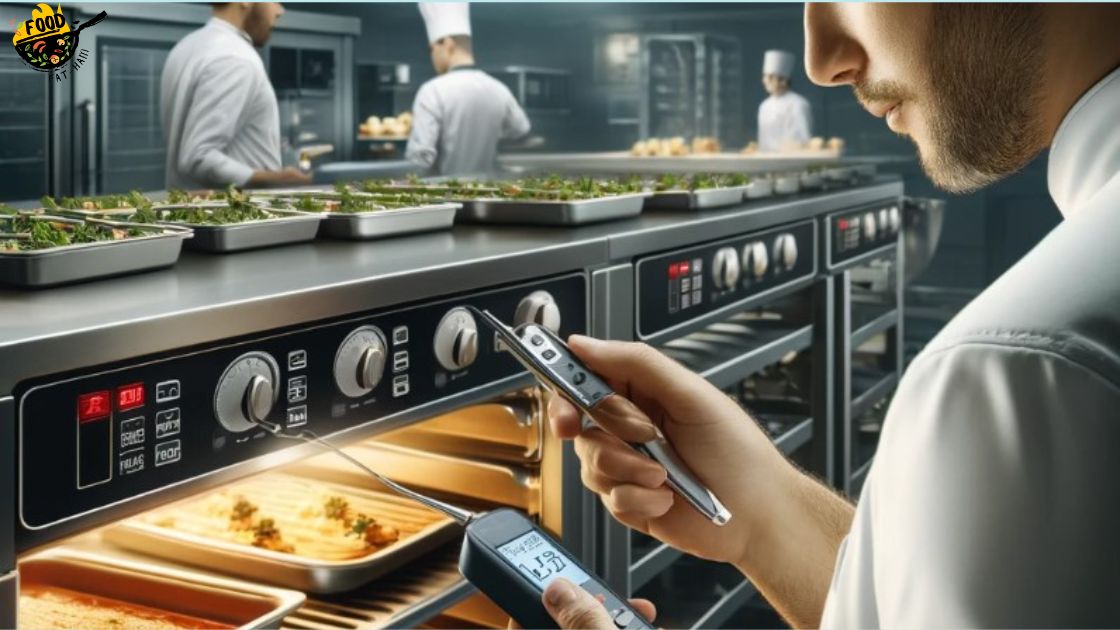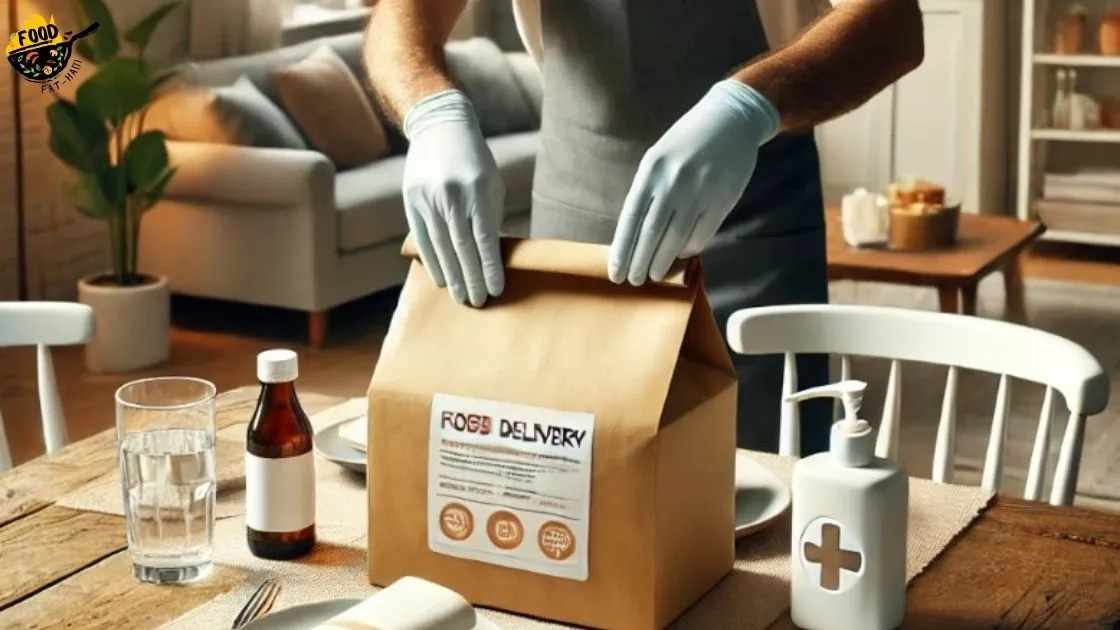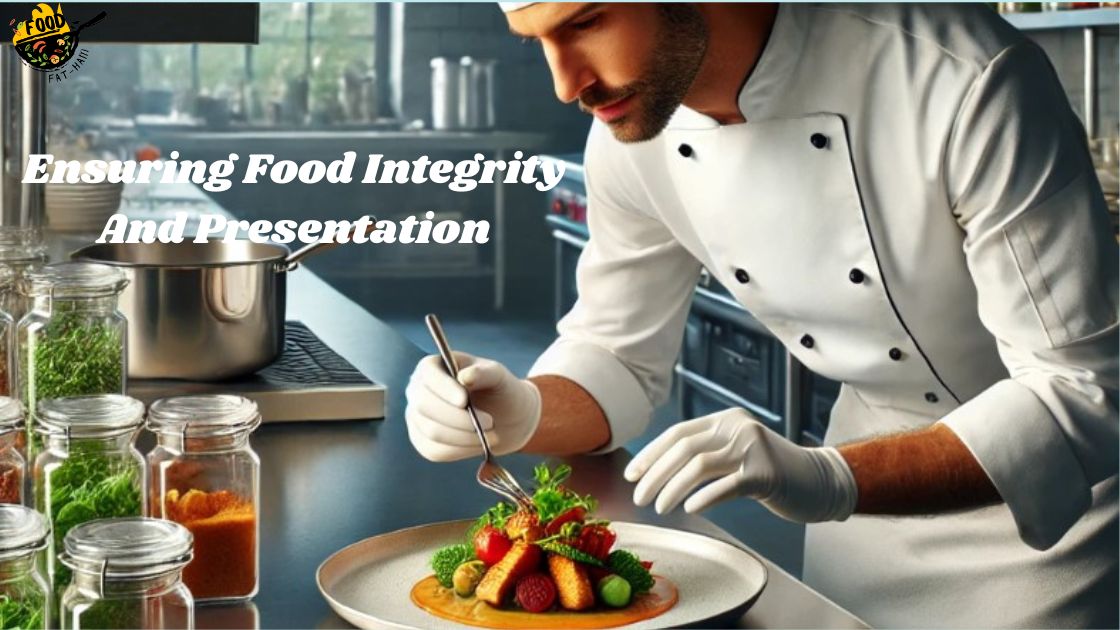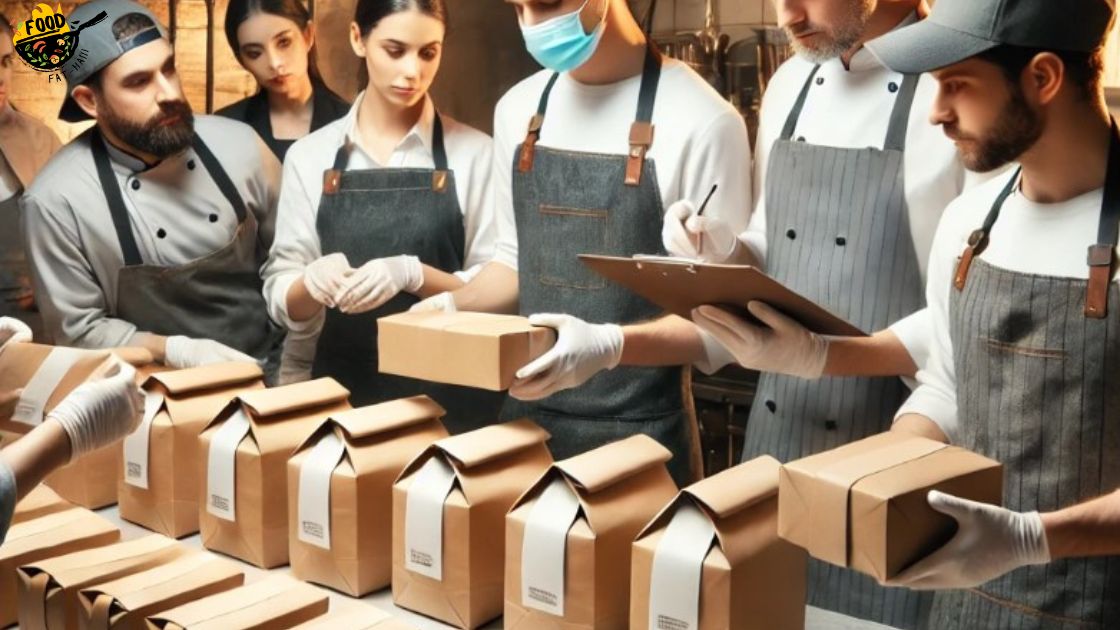Food should be properly delivered to a table by ensuring it is presented neatly and promptly to the customer. To achieve this, the server should carry the food with clean hands, place it gently on the table without any spills, and make sure all necessary cutlery and condiments are provided.
Table of Contents
ToggleAdditionally, the server should be attentive to the customer’s needs, ensuring they have everything they require for a satisfying dining experience. When food is delivered to a table, it is crucial to follow certain protocols to ensure a seamless and delightful experience for the customer.
A well-delivered meal not only enhances the dining experience but also reflects positively on the restaurant’s overall service. From the moment the server picks up the food from the kitchen, they must handle it carefully, maintaining proper hygiene and presentation. This involves ensuring clean hands, avoiding spills, and placing the dish neatly in front of the customer.
Furthermore, it is essential to promptly provide the customer with the necessary cutlery, napkins, and condiments. By following these practices, the server can guarantee a satisfactory dining experience for the customer.
Let’s describe “How Should Food Be Properly Delivered to a Table? “
Ensuring Quality And Presentation On The Table
Delivering food to the table requires attention to detail and a focus on quality. From proper plating to timely service, every element must be carefully considered to ensure a delightful dining experience for customers.

Properly delivering food to a table is not just about bringing dishes from the kitchen to the customer. It involves attention to detail, ensuring the quality and presentation of each dish as it arrives at its destination.
When it comes to delivering food to a table, there are three key factors to consider: plating techniques to enhance visual appeal, maintaining optimal food temperature, and keeping dishes intact during transportation.
Let’s explore each of these factors in detail:
Plating Techniques To Enhance Visual Appeal
A well-plated dish can instantly elevate the dining experience.
Here are some plating techniques to ensure visual appeal:
- Color harmony: Arrange different ingredients with complementary colors to make the dish visually appealing.
- Use different textures: Incorporate contrasting textures to add depth and interest to the presentation.
- Garnish strategically: Fresh herbs, edible flowers, or a drizzle of sauce can enhance the overall look of a dish.
- Create height and balance: Stack ingredients or arrange them in a visually pleasing manner to create a sense of balance.
- Consider negative space: Leaving some areas of the plate empty can make the dish look more sophisticated and less cluttered.
Maintaining Optimal Food Temperature
No one enjoys lukewarm or cold food, so it’s crucial to deliver dishes at the right temperature.

Here’s how to maintain optimal food temperature:
- Use thermal containers: Invest in insulated containers to keep hot dishes warm and cold dishes chilled during transportation.
- Pre-heat plates: Warm plates before plating the food to help retain its heat.
- Time the delivery: Coordinate the preparation and delivery of dishes so that they reach the table as soon as they are ready.
- Coordinate with the kitchen: Communicate with the kitchen staff to ensure timely preparation of each dish, minimizing waiting time for the customer.
Keeping Dishes Intact During Transportation
Ensuring that dishes arrive at the table in their intended form is essential to delivering a quality dining experience.
Consider the following tips for keeping dishes intact:
- Use sturdy packaging: Use containers that can secure and protect the food, preventing spills or breakage during transportation.
- Properly stack and secure items: Place dishes strategically in the delivery bag, making sure they won’t slide or shift during transit.
- Separate sauces and dressings: To avoid messy spills, pack sauces and dressings separately in secure containers.
- Mindful handling: Train staff to handle food packages with care during transportation to minimize any damage.
Remember, every detail matters when it comes to delivering food to a table. By implementing these plating techniques, maintaining optimal food temperature, and taking precautions to keep dishes intact during transportation, you can ensure that each dish arrives at its destination with the quality and presentation it deserves.
Addressing Hygiene And Food Safety
Properly delivering food to the table requires meticulous attention to hygiene and food safety. Ensuring that the food is handled, stored, and transported correctly plays a vital role in preventing contamination and maintaining a safe dining experience for customers.
Food delivery has become increasingly popular, especially in recent times when dining in restaurants is limited. Whether it’s a takeaway meal or a fine dining experience delivered to your doorstep, ensuring proper hygiene and food safety during the delivery process is crucial.
Let’s take a closer look at some key aspects that should be addressed to guarantee a safe and enjoyable dining experience.
Proper Packaging And Sealing Methods
- Use leak-proof and sturdy packaging materials to prevent any spills or leaks during transportation.
- Seal the containers tightly to maintain the freshness and protect the food from contamination.
- Label the packages clearly with the recipient’s name and address to avoid any mix-ups.
Maintaining Sanitary Conditions During Delivery
Train delivery staff on proper hygiene practices, including regular handwashing and the use of hand sanitizers. Provide delivery personnel with adequate personal protective equipment (PPE) such as masks and gloves.

Ensure that delivery vehicles are clean and well-maintained to avoid any potential cross-contamination. Regularly sanitize delivery bags or containers to eliminate any bacteria or viruses.
Handling Allergies And Special Dietary Requirements
Clearly communicate the ingredients used in each dish to customers, allowing them to make informed decisions based on their dietary restrictions or allergies. Provide options for customization or substitutions to accommodate specific dietary needs.
Package allergen-free or gluten-free items separately to prevent cross-contamination. Train delivery staff to handle allergy-related inquiries sensitively and with proper care.
Remember, when it comes to food delivery, maintaining hygiene and food safety should always be a top priority. By using proper packaging methods, ensuring sanitary conditions, and addressing allergies and dietary restrictions, you can provide customers with a safe and enjoyable dining experience in the comfort of their own homes.
So, let’s deliver food with utmost care and make every meal a delightful experience for our valued customers.
Efficient Delivery Logistics
Proper delivery logistics ensure food reaches the table efficiently, with attention to detail and timeliness for a seamless dining experience. The process involves careful planning, streamlined operations, and effective communication to deliver fresh and hot meals to the table.
Food delivery logistics play a crucial role in ensuring that meals are efficiently delivered to tables. From coordinating between the kitchen and waitstaff to prioritizing timeliness and accuracy in order delivery, these processes are essential in providing positive dining experiences.
Moreover, streamlining these procedures can effectively minimize customer wait times. We will delve into the key aspects of efficient delivery logistics, namely coordination between the kitchen and waitstaff, timeliness and accuracy in order delivery, and streamlining processes to minimize customer wait time.
Coordination Between Kitchen And Waitstaff
- Effective communication between the kitchen and waitstaff is vital to ensure seamless delivery.
- The kitchen team should promptly notify the waitstaff when orders are ready for delivery.
- Waitstaff should maintain clear channels of communication with the kitchen to relay any modifications or special requests from customers. This minimizes errors and ensures customer satisfaction.
- Regular meetings or the use of communication tools can help facilitate coordination and improve the overall flow of operations.
Timeliness And Accuracy In Order Delivery
- Delivering orders in a timely manner is crucial to meet customer expectations.
- Waitstaff should prioritize efficient order delivery, ensuring that meals are promptly brought to the table once prepared.
- Accuracy is equally important to guarantee that customers receive the correct meals and all requested modifications.
- Implementing systems, such as order tracking or table assignment methods, can assist in ensuring both timeliness and accuracy.
Streamlining Processes To Minimize Customer Wait Time
Waiting for food can be frustrating for customers, so it is essential to streamline processes and minimize wait times. The kitchen staff can optimize food preparation by following standardized recipes and employing techniques like batch cooking.
Utilizing technology, such as point-of-sale systems or mobile ordering platforms, can expedite the ordering process and reduce customer wait time. Efficient table turnover and prompt clearing of dishes are also crucial to accommodate new guests quickly.
By focusing on coordination, timeliness, and streamlining processes, restaurants can enhance their food delivery logistics. Prioritizing clear communication between the kitchen and waitstaff, ensuring timely and accurate order delivery, and minimizing customer wait times contribute to an overall positive dining experience.
Ensuring Food Integrity And Presentation
Delivering food with utmost integrity and presentation requires attention to detail. From proper plating to maintaining freshness, it is crucial to ensure that the food reaches the table in optimal condition for a delightful dining experience.

When it comes to delivering food to a table, it is crucial to maintain the integrity and presentation of the dishes. Whether you are a professional waiter or hosting a dinner party at home, proper food delivery techniques can enhance the dining experience for your guests.
In this section, we will explore three essential practices to ensure food integrity and presentation: the proper use of food covers and wraps, organizing delivery containers for different dishes, and using anti-spill measures for liquid food items.
Proper Use Of Food Covers And Wraps
To maintain the freshness and temperature of hot and cold dishes, it is important to utilize food covers and wraps appropriately. Here are some key points to keep in mind:
- Use lids or covers that fit properly to create a tight seal and prevent heat or cold from escaping.
- Place covers on dishes immediately after cooking or assembling to preserve flavors and aromas.
- Consider using transparent covers or wraps to showcase the visual appeal of the food and build anticipation.
- Utilize insulated covers or wraps for items that need to be kept hot or cold, such as soups or salads, to maintain the desired temperature until arrival at the table.
Organizing Delivery Containers For Different Dishes:
When delivering a variety of dishes, organizing the containers can help ensure that each item arrives intact and at its best. Here are some tips for efficient organization:
- Separate solid and liquid food items to avoid potential spills or leaks.
- Use different compartments or sectioned containers to keep various dishes separate and maintain their individual flavors.
- Arrange containers in a logical order, considering the serving sequence and the best way to present each dish.
- Label containers if necessary, especially if there are dietary restrictions or specific requests for certain dishes.
Using Anti-Spill Measures For Liquid Food Items:
Liquid food items, such as sauces, gravies, or beverages, require extra attention to prevent messy spills. Follow these preventive measures:
- Securely close and seal containers to minimize the risk of leakage during transportation.
- Utilize spill-proof containers or add additional layers of protection, such as plastic wraps or sealing tapes, to avoid accidents.
- Opt for spill-proof lids or caps with spouts for containers holding liquid items.
- When carrying liquid food items, control the speed and movement to prevent splashing or spilling.
By employing these practices, you can ensure that the food delivered to the table maintains its integrity, freshness, and appealing presentation. Properly using food covers and wraps, organizing delivery containers for different dishes, and implementing anti-spill measures for liquid food items are essential steps that contribute to an overall delightful dining experience.
Training And Communication Among Staff
Properly delivering food to a table requires effective training and communication among staff. By ensuring clear instructions and coordination, the dining experience is enhanced and customers receive their meals promptly and accurately.
Educating Delivery Personnel On Handling Food Safely
Training and education play a crucial role in ensuring that food is delivered to the table in a safe and hygienic manner. Here are some key points to consider when educating delivery personnel on handling food safely:
- Train delivery personnel on proper handling and storage of different types of food items.
- Teach them about the importance of maintaining proper temperature control during transportation to prevent foodborne illnesses.
- Emphasize the significance of maintaining a clean and sanitized environment while handling food.
- Instruct them on proper packaging techniques to prevent cross-contamination between different food items.
- Educate delivery personnel about food allergies and special dietary requirements to ensure they handle such orders with utmost care.
- Provide guidance on handling and transporting fragile or perishable items to prevent damage or spoilage.
Effective Communication With Customers For Special Requests
Clear and effective communication with customers is essential for accommodating special food requests. Here’s how to foster effective communication:
- Train delivery personnel to actively listen and understand customer requests.
- Encourage them to ask clarifying questions if any customer request is unclear.
- Emphasize the importance of relaying accurate information to the kitchen staff to ensure proper food preparation.
- Advocate for polite and professional interaction with customers, addressing any concerns or special needs with empathy.
- Promote clear communication between delivery personnel and the kitchen staff to avoid misunderstandings or errors.
- Encourage delivery personnel to provide updates to customers on the status of their orders, enhancing customer satisfaction.
Promoting Teamwork For Smooth Delivery Operations

Promoting teamwork among all staff members involved in the food delivery process is crucial for smooth operations. Here are key strategies to encourage teamwork:
Foster a collaborative work environment where all staff members can openly communicate and support each other. Encourage cross-training among delivery personnel to ensure flexibility and a better understanding of each person’s role.
Promote effective communication between delivery personnel, kitchen staff, and management to address any challenges or issues promptly. Implement regular team meetings or check-ins to discuss feedback, share best practices, and address concerns.
Recognize and appreciate the efforts of delivery personnel and other staff members, strengthening their motivation and commitment. Provide opportunities for team-building activities to enhance camaraderie and cooperation among staff members.
Remember, educating delivery personnel on food safety, fostering effective communication with customers, and promoting teamwork are essential for ensuring a seamless food delivery experience. By implementing these strategies, you can enhance customer satisfaction while maintaining high standards of food handling and delivery operations.
Fine Dining Establishments
Properly delivering food to a table is an art at fine dining establishments. With meticulous attention to detail, servers ensure that meals are presented flawlessly, creating a memorable dining experience for guests.
Fine dining establishments require careful attention to detail when it comes to delivering food to the table. From the plating and presentation to the coordinated efforts of the kitchen and serving staff, every aspect plays a crucial role in providing an exceptional dining experience.
Additionally, the implementation of specialized delivery systems further elevates the quality of service provided. In this section, we will explore these factors in more detail.
Attention To Detail In Plating And Presentation:
- Each dish is meticulously plated to create a visually appealing presentation.
- The presentation enhances the overall dining experience by engaging the senses.
- Garnishes, sauces, and intricate arrangements are carefully positioned to add aesthetic value.
- The use of elegant serving plates and utensils complements the high-end ambiance.
Coordinated Efforts Of Kitchen And Serving Staff:
- The kitchen and serving staff work together seamlessly to ensure smooth food delivery.
- Proper communication is essential to coordinate timing and avoid delays in serving.
- The kitchen prepares the dishes promptly, while the serving staff is ready to deliver them promptly.
- Attention is paid to each course, ensuring that it is delivered at the optimal temperature and freshness.
Implementation Of Specialized Delivery Systems:
- Fine dining establishments often utilize unique delivery systems to enhance the dining experience.
- Cloches and domes are used to unveil the dishes at the table, creating suspense and anticipation.
- Trolleys and tray stands are employed to deliver multiple courses simultaneously.
- Some establishments incorporate theatrical elements, such as tableside preparation or flambe dishes, to add an extra touch of sophistication.
In fine dining establishments, the attention to detail in plating and presentation, coordinated efforts of the kitchen and serving staff, and implementation of specialized delivery systems all contribute to an exceptional dining experience. From the visual appeal of each dish to the seamless coordination between the kitchen and serving staff, every aspect is carefully orchestrated to ensure that each patron receives a memorable and enjoyable dining experience.
Fast Food Chains
Properly delivering food to a table requires careful attention and efficient service. Fast food chains should ensure timely delivery, and accuracy in orders, and prioritize hygiene to satisfy customers.
Efficient Packaging And Delivery Systems
- Fast food chains have to implement efficient packaging and delivery systems to ensure that food reaches the customer’s table quickly and in perfect condition.
- These systems are designed to streamline the process, minimize errors, and maintain the quality of the food.
- By using the right packaging materials and techniques, fast food chains can prevent leakage, maintain temperature, and ensure that the food arrives fresh and intact.
- Advanced technologies like insulated bags, heat-retention packaging, and tamper-proof containers are employed to keep the food hot, cold, and secure during transit.
- The focus is on packaging that is both functional and visually appealing, with branding elements incorporated to enhance the overall customer experience.
Streamlined Process For Grab-And-Go Orders
Fast food chains have recognized the growing demand for convenience and speed, leading them to develop a streamlined process for grab-and-go orders. These processes prioritize efficiency while still delivering high-quality food. Customers can quickly pick up their orders without any hassle.
The ordering and payment systems are designed to be fast and user-friendly, allowing customers to place their orders and make payments electronically. Dedicated pickup stations or designated areas within the restaurant are set up so that customers can easily locate their orders and complete the transaction quickly.
The grab-and-go process is not only convenient for customers but also increases the overall efficiency of the fast food chain, reducing wait times and improving customer satisfaction.
Ensuring Consistency Of Food Quality Across Multiple Outlets
- Maintaining consistency in food quality is a top priority for fast-food chains with multiple outlets.
- Standardization is key, with well-defined recipes and cooking procedures implemented across all locations to ensure that the food tastes the same no matter where it is ordered.
- Regular training and monitoring programs are in place to ensure that all employees meet the required standards and follow the prescribed cooking methods.
- Quality checks and audits are conducted frequently to identify any deviations and make necessary adjustments to maintain consistency.
- By prioritizing consistency in food quality, fast food chains build trust and loyalty among their customers, who can expect the same great taste and experience regardless of the outlet they visit.
Fast food chains employ efficient packaging and delivery systems to ensure that food is delivered to the table in a quick and pristine condition. They also implement streamlined processes for grab-and-go orders to provide convenience and speed for customers. Additionally, maintaining consistency in food quality across multiple outlets is crucial for fast food chains, achieved through standardization, training, and regular quality checks.
Frequently Asked Questions On How Should Food Be Properly Delivered To A Table
How Do You Perform A Table Service?
To perform table service, follow these steps: Take orders, serve food, clear dishes, and provide excellent customer service.
What Is Proper Etiquette For Serving Food?
Proper etiquette for serving food includes the following guidelines: 1. Use clean utensils and serve in an orderly manner. 2. Serve from the left and clear from the right. 3. Offer seconds politely and keep dishes warm. 4. Respect dietary preferences and allergies.
Do You Serve Food To The Right Or Left?
We serve food on both sides, ensuring equal distribution among guests.
How Should Food Be Properly Delivered To A Table?
When delivering food to a table, it’s important to follow these steps:
1. Use a clean tray or plate to carry the dishes. 2. Approach the table from the left side of the customer. 3. Serve each dish individually, starting with the oldest order. 4. Ensure all utensils and condiments are provided. 5. Be attentive and ready to assist with any additional requests.
Conclusion
Ensuring that food is properly delivered to the table is crucial for providing a positive dining experience. By following a few key guidelines, restaurants can optimize their table delivery process. First and foremost, making sure that the food is prepared correctly and plated with care is essential.
Additionally, training staff members to handle food with proper etiquette and professionalism can greatly enhance the delivery process. Utilizing technology, such as food delivery apps or ordering systems, can also streamline the delivery process and minimize errors. Lastly, consistently monitoring and seeking feedback from customers can help identify areas for improvement and ensure that the delivery process continues to meet their expectations.
By focusing on these aspects, restaurants can create a seamless and enjoyable experience for guests, resulting in customer satisfaction and loyalty.



